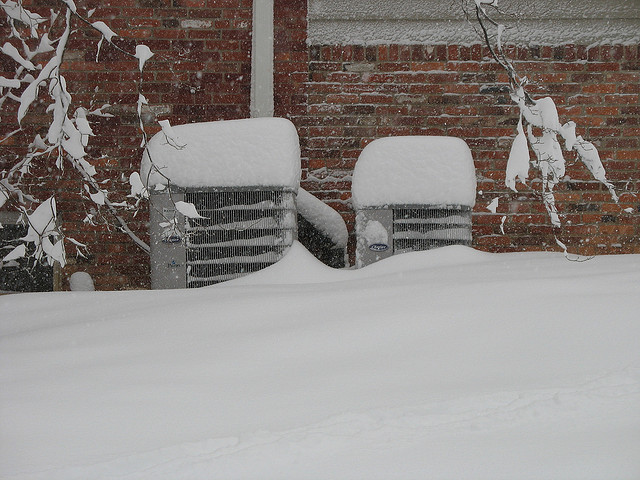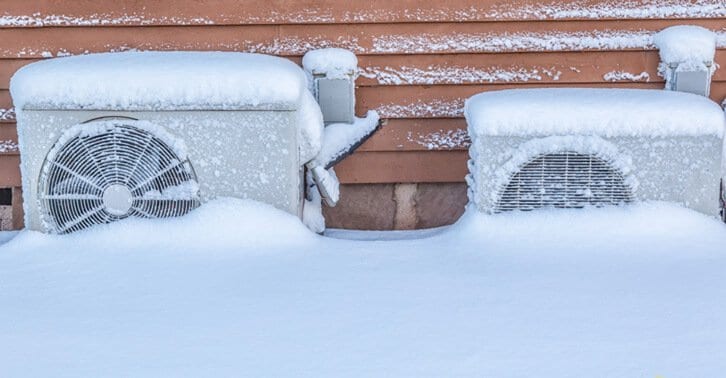Steps to Take If My AC Pipe Is Frozen - Immediate Solutions for Thawing
Steps to Take If My AC Pipe Is Frozen - Immediate Solutions for Thawing
Blog Article
Listed here below you can get lots of brilliant details involving Why Is Ice On My Outside Air Conditione.

Introduction
Finding that your air conditioning pipe is frozen can be concerning, particularly during hot summertime when you rely upon your air conditioner one of the most. Recognizing what to do in such a circumstance is critical to stop more damage to your cooling system and guarantee your convenience inside your home.
Understanding the Causes
Several variables can add to the cold of an a/c pipe. Understanding these reasons can assist you deal with the issue properly.
Absence of Airflow
One typical cause of a frozen air conditioner pipe is inadequate airflow. When the air movement over the evaporator coil is restricted, it can cause the coil to go down below freezing temperature, leading to ice development on the pipe.
Reduced Refrigerant Levels
Inadequate refrigerant degrees in your air conditioning system can additionally lead to a frozen pipeline. Low cooling agent degrees can cause the stress in the system to drop, bring about the freezing of dampness on the evaporator coil.
Cold Weather Conditions
In cooler environments, freezing temperatures outside can add to the freezing of air conditioner pipes. If your AC system is not correctly shielded or if there are leaks in the ductwork, cool air can infiltrate the system, triggering the pipe to ice up.
Dirty Air Filters
Dirty or stopped up air filters can restrict air movement in your AC system, bring about numerous problems, consisting of an icy pipe. It's necessary to replace or cleanse your air filters regularly to make certain proper air movement and stop ice build-up.
Indicators of a Frozen Air Conditioning Pipe
Acknowledging the indications of an icy AC pipeline is essential for timely activity.
Lowered Airflow
If you see a substantial decrease in air movement from your vents, it can show an icy pipeline.
Ice Buildup on the Pipe
Noticeable ice build-up on the cooling agent line or the evaporator coil is a clear sign of an icy air conditioner pipe.
Unusual Sounds from the Unit
Uncommon noises, such as hissing or bubbling, originating from your AC system can signify that there's ice existing on the pipeline.
Immediate Actions to Take
When confronted with an icy AC pipeline, it's important to act rapidly to prevent additional damage to your air conditioning system.
Shutting off the air conditioner
The primary step is to shut off your air conditioning unit to stop the system from running and worsening the problem.
Checking for Blockages
Examine the area around the indoor unit for any kind of blockages that may be blocking air flow, such as furniture or drapes.
Thawing the Pipe
You can make use of mild approaches like placing towels soaked in warm water around the icy pipe to help thaw it slowly.
Safety nets
Taking safety nets can help avoid future events of a frozen air conditioner pipe.
Routine Maintenance Checks
Schedule normal upkeep get in touch with an expert HVAC professional to make sure that your a/c system is running successfully.
Transforming Air Filters
Frequently change or cleanse your air filters to prevent air flow constraints and preserve ideal performance.
Insulating Exposed Pipes
If your air conditioner pipelines are revealed to cool temperature levels, consider protecting them to stop cold during cold weather.
Looking For Professional Help
If DIY approaches fall short to resolve the problem or if you're unsure about exactly how to proceed, it's finest to seek help from a qualified HVAC technician.
When DIY Methods Fail
If your efforts to thaw the pipeline or address various other problems are not successful, it's time to call a professional.
Significance of Hiring a Professional HVAC Technician
A licensed HVAC service technician has the competence and devices necessary to detect and fix problems with your a/c system safely and efficiently.
Conclusion
Handling an icy air conditioning pipeline can be a frustrating experience, yet knowing just how to respond can assist decrease damage and restore comfort to your home. By understanding the causes, recognizing the indications, and taking prompt activity, you can effectively address the issue and protect against future occurrences.
Frozen AC Line: Why It Happens & What To Do About It
A frozen AC line can be a rather peculiar sight in a place like Phoenix, Arizona where nothing ever freezes. In this post, we’ll discuss what makes an air conditioner line frozen – and what you can do about it.
Dirty Air Filters
Did you know that you should be cleaning or replacing your air filters on a monthly basis? Failing to do this can result in airflow issues that, in turn, cause your evaporator coils and lines to freeze over. You’ll notice a buildup of ice on both components, although the buildup on your pipes will, of course, be more evident unless you open your air condition up to reveal the coils.
What To Do About It
Give your air filter a good cleaning if it’s reusable. If not, replace the filter outright. Next, switch your air conditioner’s fan setting on and leave it there for 2-3 hours. This will draw warm air in, helping to thaw your evaporator coil. You can also check out this article for some tips on cleaning the coils themselves if you’d like to speed the process up. Before you switch the unit back to its normal state, make sure the supply vents are completely unobstructed and free of dust or other debris.
If you keep having this issue even after replacing your filters regularly, contact a local HVAC repair company and have them inspect your evaporator coil, ductwork, and any other components that may be at fault. If you live in the Phoenix, Arizona area, give American Home Water and Air a call.
Low Refrigerant Levels/Leakage
What To Do About It
Contrary to what air conditioner “recharge” companies often tell their clients about refrigerant, it should never need to be simply refilled. You see, refrigerant runs in what experts refer to as a “closed loop.” Refrigerant really shouldn’t be leaving that loop. If it is, you’ve got a leak.
Paying someone to come and pump more refrigerant into your system (aka “recharge” it) isn’t the solution. Doing that will simply kick the can down the road. Besides, refrigerant leaks can be harmful to the environment and people in your home.
Rather, you need to take care of the leak with the help of a technician. Check out this article for some more information about dealing with air conditioners that are leaking refrigerant. Before you contact a technician, switch your thermostat to the off position. Then, switch the fan setting on and let it run for 2-3 hours so the unit can thaw.
Improper Temperature Setting
Improper temperature settings can also cause a drop in your air conditioner’s pressure. What many people don’t realize is that air conditioners are actually designed to run when temperatures have fallen above roughly 60 degrees Fahrenheit. If you run the unit when it’s cold outside, you’ll run into many issues, including frozen components.

Do you enjoy reading about Air Conditioner Frozen? How To Fix your Frozen AC Line? Create feedback directly below. We'd be pleased to know your thinking about this blog posting. We hope to see you back again in the near future. If you appreciated our post please do not forget to pass it around. I recognize the value of reading our article about Air Conditioner Frozen? How To Fix your Frozen AC Line.
Click Here Report this page